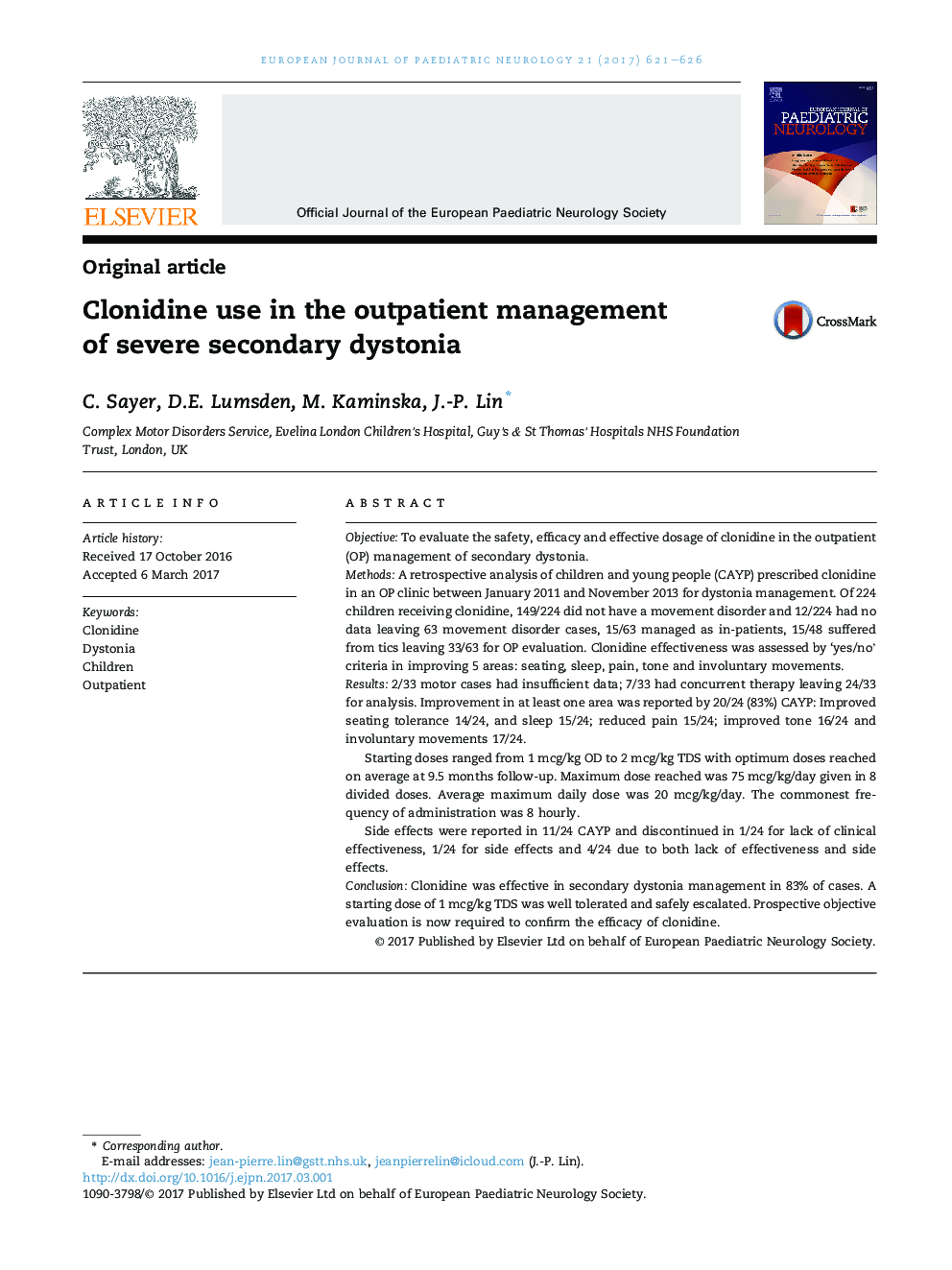| کد مقاله | کد نشریه | سال انتشار | مقاله انگلیسی | نسخه تمام متن |
|---|---|---|---|---|
| 5628799 | 1579999 | 2017 | 6 صفحه PDF | دانلود رایگان |

- Clonidine reduces dystonia and leads to functional improvement in an outpatient paediatric cohort.
- Clonidine is well-tolerated with only one child stopping treatment due to side effects.
- A reasonable starting dose is 1Â mcg/kg TDS.
ObjectiveTo evaluate the safety, efficacy and effective dosage of clonidine in the outpatient (OP) management of secondary dystonia.MethodsA retrospective analysis of children and young people (CAYP) prescribed clonidine in an OP clinic between January 2011 and November 2013 for dystonia management. Of 224 children receiving clonidine, 149/224 did not have a movement disorder and 12/224 had no data leaving 63 movement disorder cases, 15/63 managed as in-patients, 15/48 suffered from tics leaving 33/63 for OP evaluation. Clonidine effectiveness was assessed by 'yes/no' criteria in improving 5 areas: seating, sleep, pain, tone and involuntary movements.Results2/33 motor cases had insufficient data; 7/33 had concurrent therapy leaving 24/33 for analysis. Improvement in at least one area was reported by 20/24 (83%) CAYP: Improved seating tolerance 14/24, and sleep 15/24; reduced pain 15/24; improved tone 16/24 and involuntary movements 17/24.Starting doses ranged from 1Â mcg/kg OD to 2Â mcg/kg TDS with optimum doses reached on average at 9.5 months follow-up. Maximum dose reached was 75Â mcg/kg/day given in 8 divided doses. Average maximum daily dose was 20Â mcg/kg/day. The commonest frequency of administration was 8 hourly.Side effects were reported in 11/24 CAYP and discontinued in 1/24 for lack of clinical effectiveness, 1/24 for side effects and 4/24 due to both lack of effectiveness and side effects.ConclusionClonidine was effective in secondary dystonia management in 83% of cases. A starting dose of 1Â mcg/kg TDS was well tolerated and safely escalated. Prospective objective evaluation is now required to confirm the efficacy of clonidine.
Journal: European Journal of Paediatric Neurology - Volume 21, Issue 4, July 2017, Pages 621-626